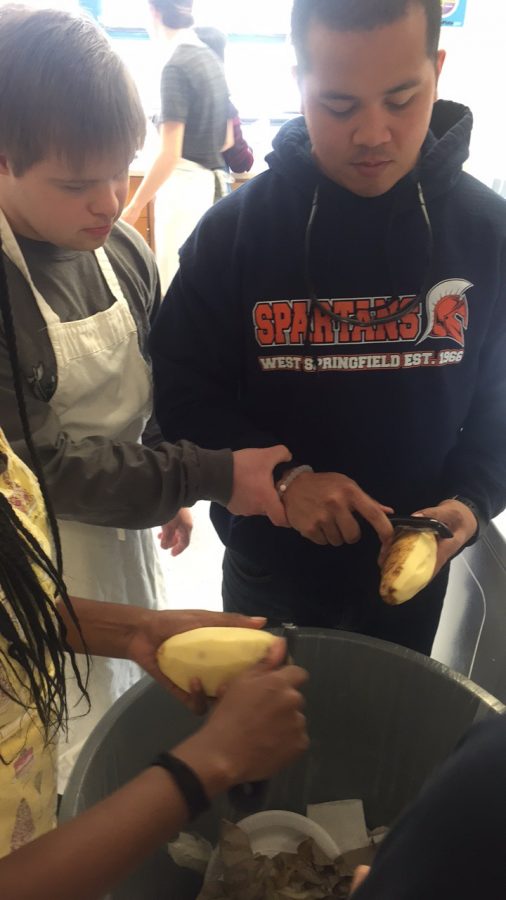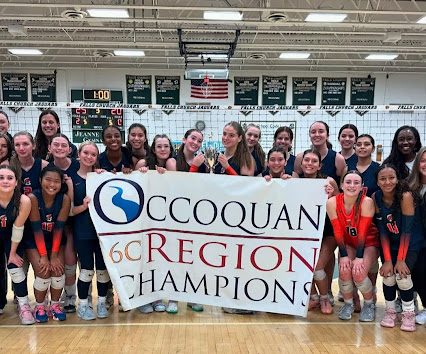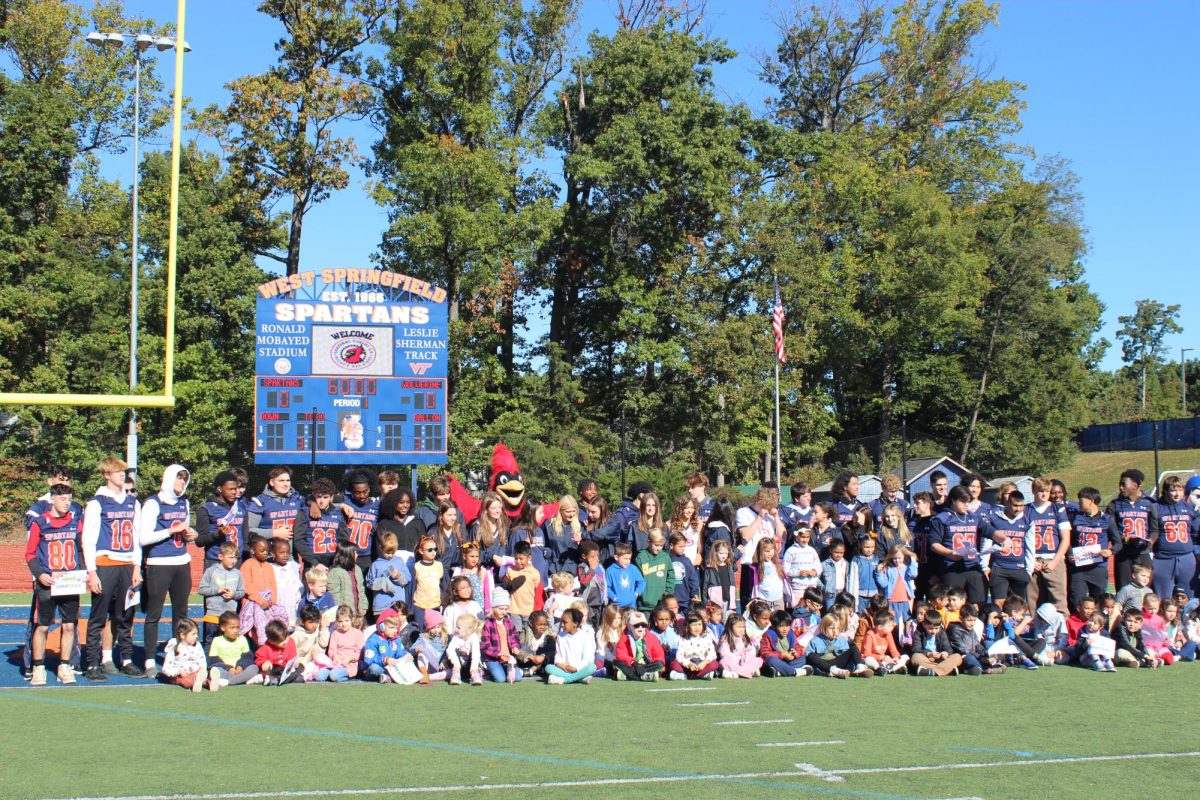Gourmet Foods and Special Ed unite
Photo courtesy of Safia Abdulahi
Senior Samuel Schwartz, who is on the left, gets cooking in the Gourmet Foods’ kitchen. Next to him is his teacher IA Joe Ibanez.
April 20, 2017
Armed with enthusiasm and grumbling stomachs, the special ed population has taken control of the kitchen with gourmet foods students.
For the past five years, this collaboration has allowed special ed students to step outside of the classroom and immerse themselves in a hands-on experience. Meanwhile, gourmet foods students get the chance to work with new partners and practice their leadership skills.
“The student body here is fantastic with dealing with our population,” said Instructional Assistant (IA) Steve Culberth. “They are very responsive and receptive to special needs and a lot of them will reach out and help them [special ed students] and guide them if they have any questions.”
Throughout the school year, special needs students get the chance to be in the kitchen every few weeks or so and attempt different dishes. They are divided into two groups based on the amount of supervision they need. Low incidence students work with extra IAs during 5th period, and high incidence students cook during 8th period with less supervision.
“A low incidence student is somebody who is not working towards a standard diploma,” said Learning Disabilities Teacher Tammy Stickler. “That is basically the main difference. Both groups get to interact with kids who are the same age who don’t have disabilities. On top of that, they learn some life skills we, as people without disabilities, often take for granted.”
Special needs students also learn basic safety by being aware of equipment that can be deemed dangerous while cooking. During class, teachers demonstrate step-by-step how to prepare the ingredients and make the food, with occasional reminders of staying back from hot oil and being careful with sharp knives.
In order to minimize safety hazards, IAs carefully oversee lessons in the kitchen to make the experience as comfortable as possible for the students.
“We are here to monitor and manipulate the curriculum and whatever it takes to keep [students] safe [while they] also get the experience of putting the product out there and preparing the food.” said Culberth. “Sometimes, we have to modify what it is that’s done in the kitchen to make it a little bit safer.”
While keeping safety measures in mind, the special ed students don’t forget to also have fun while being in the kitchen. The students are all smiles as they watch their teacher’s demonstration. A big benefit of learning how to cook is getting to taste the product.
“Sometimes they love [the food] and sometimes they hate it,” said Instructional Assistant Joe Ibanez. “They’re very honest with you and if they don’t like it, they’ll let you know. But if they love it, they won’t let you have a bite.”
Having some additional students around also keeps teachers busy. Family and Consumer Science Teacher Robin Griffin deals with the extra students by receiving the help of the IAs and getting the special ed kids comfortable by playfully joking around with them.
“I love these students so much and they’re all just so fun and sweet,” said Griffin. “I like to joke with them and we have a good time. I look forward to this class.”
As for the gourmet foods students, having the opportunity to team up with the special needs population offers a new perspective on bridging the gap between special education and general education. For some, the collaboration has also helped them realize a potential career path for the future.
“The special ed kids are always happy and willing to try stuff,” said sophomore Olivia Carey. “I’ve realized that I want to work with special needs people.”





